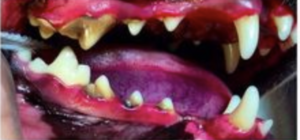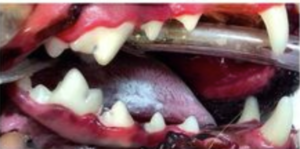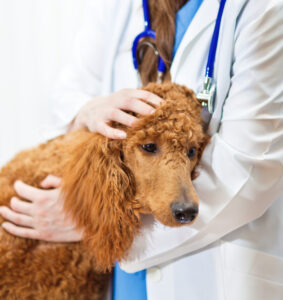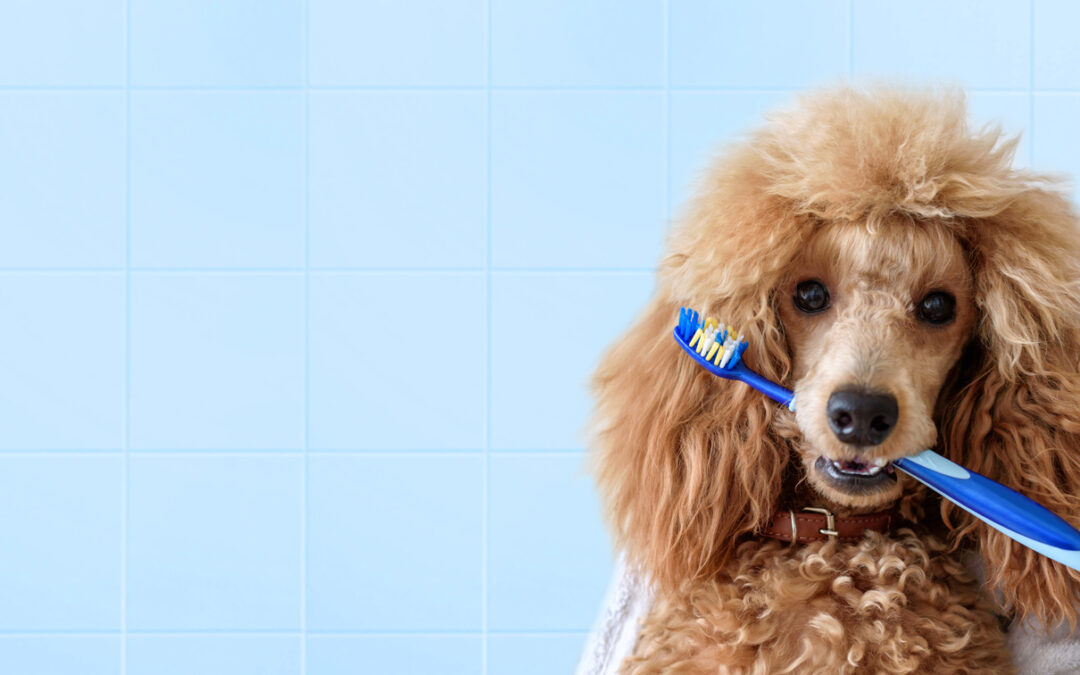February is Dental Month! And that means it is never too early to start thinking about your pup’s dental hygiene and care. Below, you will find a basic overview that answers some of the most common questions dog owners have when it comes to their furry companion’s teeth and what you can expect during a trip to the vet for a teeth cleaning!

Dogs and their teeth.
In a broad sense, we can think of our dog’s teeth just like we would our own when it comes to the fundamentals of hygiene and care. The very same health problems that can arise with human teeth – think plaque, gingivitis, tartar, gum disease, tooth loss – can occur with your dog’s teeth, too. Think about it, you wouldn’t avoid going to the dentist for regular check ups and examinations, right? Well, the same rules apply to your pup!


This “before and after” really shows what a difference a little dental work can do!
Evolutionary differences…
While humans can very easily communicate when they are feeling discomfort or pain in their mouths, dogs are just plain different, but not for the reason you might think. Obviously, your dog cannot speak (if your dog can talk, however, I think you might have more pressing concerns). But, our pooches are evolutionarily developed not to always react to chronic pain. Their animal instincts, more often than not, dictate that they not show signs of weakness, leading to the possible scenario where your pup may be eating just fine despite an abscessed tooth or bleeding gums.

What to expect during your pup’s dental visit!
A dental visit with your veterinarian can best be characterized in two stages. This first involves an oral examination. While inspecting your pup’s mouth, you veterinarian is looking for a variety different of conditions and symptoms, including:
- Odor
- Red or swollen gums
- Bleeding gums
- Discolored teeth
- Broken or missing teeth
- Plaque and tartar

After an initial examination, general anesthesia is required to conduct a more thorough set of examinations and cleaning. The anesthesia allows your vet to look more closely at your dog’s teeth, gums, tongue, mouth, throat, and jaw. Your veterinarian will look for periodontal pockets around the teeth, check all 42 teeth individually, as well as take x-rays. All of these steps are vital in determining the presence of periodontal disease, or gum disease, which occurs below the gum line and affects a large number of dogs over three years of age. Your vet may also check for a variety of other factors, including:

- Malocclussions (when a two teeth are touching, or a tooth is touching the palate or soft tissue)
- The tongue and underneath the tongue
- The tonsils
- Cheek tissue
- Lip margins
- The jaw
- TMJ joint
- Enlarged or swollen lymph nodes
What does a cleaning include?

If your vet determines that simple cleaning is in order, your pooch will undergo:
- The removal of calculus above the gum line
- The removal of calculus below the gum line
- The smoothing of rough tooth surfaces
- The removal of dead gum tissue
- An irrigation under the gum line
- The application of fluoride
- A final tooth-by-tooth polish?
 Of course, if further treatment is needed, your vet will take you through your specific treatment plan step by step. All breeds are different, and some require different treatment regimens or a little extra oral attention!
Of course, if further treatment is needed, your vet will take you through your specific treatment plan step by step. All breeds are different, and some require different treatment regimens or a little extra oral attention!

